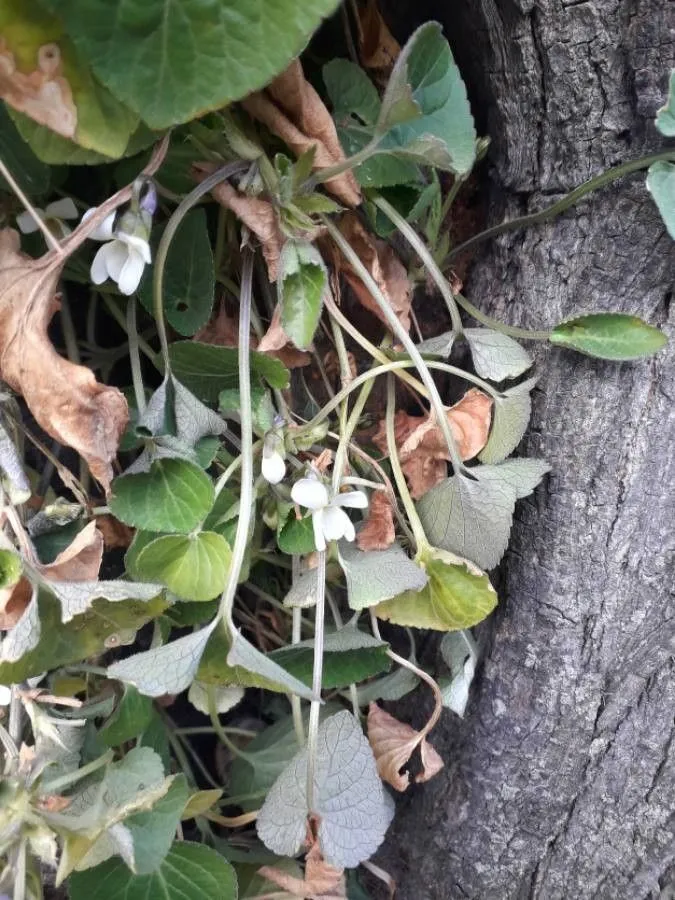
Author: Besser
Bibliography: Prim. Fl. Galiciae Austriac. 1: 171 (1809)
Year: 1809
Status: accepted
Rank: species
Genus: Viola
Vegetable: Unknown
Observations: S. France to S. Poland and NW. Türkiye
The White Violet, scientifically known as Viola alba, belongs to the family Violaceae. This delicate and charming plant is native to various regions spanning from Southern France to Southern Poland and Northwestern Türkiye. First documented by Besser in 1809 in his work “Prim. Fl. Galiciae Austriac.,” the White Violet holds a distinctive place in the rich tapestry of European flora.
Viola alba typically thrives in temperate climates and is often found in woodland areas, meadows, and along shaded paths. Its name, White Violet, aptly describes its striking blossoms which are predominantly white, often with subtle tinges of light purples or blues near the base of the petals. These flowers are not just visually appealing but also play a crucial role in local ecosystems, attracting various pollinators, including bees and butterflies.
The plant has a compact growth habit, with heart-shaped leaves that form a basal rosette. The flowering stems rise delicately above the foliage, each bearing a single flower. The simplicity and purity of its blooms have made it a symbol of innocence and modesty in various cultural contexts.
To cultivate Viola alba successfully, gardeners should aim to mimic its natural habitat by providing partial to full shade and moist, well-drained soil. It can be a beautiful addition to woodland gardens or shaded borders, where it can form lovely ground cover beneath taller plants.
Although it is not widely renowned for its medicinal uses, the White Violet, like many members of the Violaceae family, has been traditionally employed in herbal medicine for its mild calming and anti-inflammatory properties. However, such uses should be approached with caution and under guidance due to the potential for toxicity in large quantities.
In summary, the White Violet is not only a botanical gem but also an essential component of the flora in its native regions. Appreciated for its delicate beauty and ecological value, Viola alba continues to enchant plant enthusiasts and naturalists alike.
Eng: parma violet, white violet
Deu: weißes veilchen
Swe: silverviol, vitviol
Nob: hvitfiol
Nno: kvitfiol
En: White violet, Parma violet
Bg: Бяла теменуга
Ca: Viola
Cs: Violka bílá
Nl: Wit viooltje
Fi: Hopeaorvokki
Fr: Violette blanche
De: Weißes Veilchen
Hu: Fehér ibolya
It: Viola bianca
Lt: Baltoji našlaitė
Nb: Hvitfiol
Nn: Kvitfiol
Oc: Violeta blanca
Fa: بنفشه سفید
Pl: Fiołek biały
Pt: Violeta-branca
Sk: Fialka biela
Sv: Silverviol, Vitviol
Tr: Ak menekşe
Uk: Біла фіалка
© copyright of the Board of Trustees of the Royal Botanic Gardens, Kew.
© copyright of the Board of Trustees of the Royal Botanic Gardens, Kew.
© copyright of the Board of Trustees of the Royal Botanic Gardens, Kew.
Taken Feb 18, 2019 by Fejul Xeto (cc-by-sa)
Taken Feb 27, 2019 by Fejul Xeto (cc-by-sa)
Taken Feb 18, 2019 by Fejul Xeto (cc-by-sa)
Taken Feb 18, 2019 by Fejul Xeto (cc-by-sa)
Taken Feb 18, 2019 by Fejul Xeto (cc-by-sa)
Taken Mar 18, 2018 by Tela Botanica − Jean-Jacques HOUDRÉ (cc-by-sa)
Taken Feb 25, 2021 by Llandrich anna (cc-by-sa)
Taken Apr 2, 2016 by Tela Botanica − Yoan MARTIN (cc-by-sa)
Taken Mar 3, 2021 by Dominique Guyaux (cc-by-sa)
Taken Feb 12, 2019 by Llandrich anna (cc-by-sa)
Taken Mar 13, 2021 by Cristian Zanella Cristian Zanella (cc-by-sa)
Taken Mar 18, 2017 by Yoan MARTIN (cc-by-sa)
Taken Sep 3, 2022 by Patrice Bracquart (cc-by-sa)
Taken Mar 11, 2021 by Mathieu VALENTIN (cc-by-sa)
Taken Feb 26, 2020 by llopis ferran (cc-by-sa)
Taken Apr 14, 2021 by Henk van den Ende (cc-by-sa)
Taken Mar 14, 2021 by Pascal Roche (cc-by-sa)
Taken Mar 14, 2022 by Michel AMBROISE (cc-by-sa)
Taken Mar 9, 2022 by Jean-Francois Dumas (cc-by-sa)
Taken Feb 14, 2020 by Franco Colnago (cc-by-sa)
Taken Mar 1, 2022 by troglo (cc-by-sa)
Taken Mar 15, 2018 by Photoflora – Benoit BOCK (©)
Taken Mar 31, 2013 by Tela Botanica − Jean-Jacques HOUDRÉ (cc-by-sa)
Taken Feb 23, 2021 by anais chabe (cc-by-sa)
Taken Mar 2, 2022 by huy HO (cc-by-sa)
Taken Mar 19, 2016 by Tela Botanica − Liliane ROUBAUDI (cc-by-sa)
Taken Mar 19, 2016 by Tela Botanica − Liliane ROUBAUDI (cc-by-sa)
Taken Mar 19, 2016 by Tela Botanica − Liliane ROUBAUDI (cc-by-sa)
Taken Mar 19, 2016 by Tela Botanica − Liliane ROUBAUDI (cc-by-sa)
Taken Mar 18, 2017 by Yoan MARTIN (cc-by-sa)
Family: Myrtaceae Author: (F.Muell.) K.D.Hill & L.A.S.Johnson Bibliography: Telopea 6: 402 (1995) Year: 1995 Status:…
Family: Rubiaceae Author: Pierre ex A.Froehner Bibliography: Notizbl. Bot. Gart. Berlin-Dahlem 1: 237 (1897) Year:…
Family: Sapindaceae Author: Koidz. Bibliography: J. Coll. Sci. Imp. Univ. Tokyo 32(1): 38 (1911) Year:…
Family: Asteraceae Author: A.Gray Bibliography: Pacif. Railr. Rep.: 107 (1857) Year: 1857 Status: accepted Rank:…
Family: Fabaceae Author: Medik. Bibliography: Vorles. Churpfälz. Phys.-Ökon. Ges. 2: 398 (1787) Year: 1787 Status:…
Family: Aspleniaceae Author: (Cav.) Alston Bibliography: Bull. Misc. Inform. Kew 1932: 309 (1932) Year: 1932…